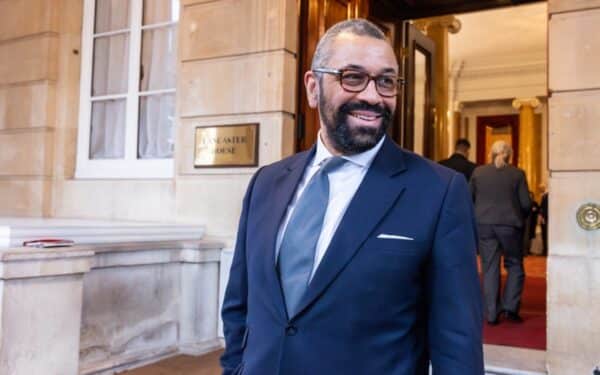Britain’s rail buccaneers are back, and hopefully soon in business. Ambitious plans for the first privately-funded railway line to be built in Britain since the First World War will tonight (Tuesday) be submitted to the government for approval.
It’s taken seven years of blood, sweat and tears but engineer, George Bathurst, has finally won his battle to put forward his proposals for a new £1bn project – the Windsor Rail Link – to the Transport department.
The proposed Windsor Rail Link will connect the two stations in Windsor – one by the Queen’s castle and the other by the river – by tunnel. It will also link to Heathrow at no cost to the taxpayer and improve the journey time for millions of rail passengers and ease the horrendous traffic congestion in the area.
Although the castle and the riverside stations are only 300 metres apart, there has never been a link between the two because of rivalries between the first rail companies – the Great Western and the London & South Western in the nineteenth century.
But Bathurst’s plan is to provide a new tunnel which will allow the existing franchise operators, South Western and Great Western, to run through trains.
Backing Bathurst’s plans are two of Europe’s biggest infrastructure players – Meridiam SAS, one of France’s leading infrastructure investment funds which has stakes in the TGV, and Skanska, Sweden’s construction giant. Both the French and the Swedes will be taking equity stakes in the new consortium and investing for the long-term. Bathurst will take a tiny stake himself.
Ironically, Bathurst says finalising the consortium has been easier since Brexit, mainly because of sterling’s depreciation. “Once they got over the shock, both groups have been hugely enthusiastic.”
No wonder. Britain is going through something of a golden age in rail with stunning projects such as Crossrail showing that not only does the UK have engineering skills but a newly discovered will to build big. The UK is also Europe’s biggest rail market – more than 20% of all the continent’s rail travel is here while demand for rail travel has never been higher.
Starting with Windsor is rather smart too. More than two million tourists visit the town every year and the surrounding rail and road networks are a mess. Bathurst says the first phase of the Windsor Link Railway, which includes a mile of new railway line and a covered tunnel, will cost £370m while the second phase connecting Heathrow to the west – possibly via Slough – via a number of options is estimated conservatively at around £900m.
He adds that journey times from Slough to Waterloo could be reduced by more than half with a new rail link, easing traffic jams and improving air quality. His plans include proposals for regeneration of the Windsor area including 1,000 new homes as well as revenue from land sales to go back to the government of around £150m. “All parties will share in the proceeds of the project. But there will be no cost to the taxpayer.”
While there have been privately-financed rail schemes such as the Chilterns and Heathrow Express, the Windsor Link is the first totally privately-funded and promoted rail project since the great railway companies built their networks in the Victorian era, with the last being built just before the First World War.
Bathurst, who lives in central Windsor, first came up with the seeds of linking the two stations more than seven years ago. Although he’s an electronics engineer, he had to work out how to solve the problem of the different gradients between the two stations. Once that was sorted, he brought in other experts who have been working on a pro bono basis to put together a viable scheme.
He likes to think it’s his tenacity which has led to Chris Grayling, the Transport Secretary, to finally open up the process to private operators with today’s announcement that the government will now Market-Led Proposals. What’s more, it rather seems as though Grayling has got the message that privately-funded proposals are not so daft after all, as he also admitted that the public sector does not have a “monopoly on good ideas.”
Grayling added: “We want to provide a sustainable future for the rail sector and open up the development and delivery of rail infrastructure to take full advantage of new and innovative solutions and relieve the burden on taxpayers and farepayers.”
“The department is keen to engage with promoters and investors of market-led proposals across all transport sectors.”
Even Network Rail, which owns the UK’s rail infrastructure, was positive, welcoming market solutions” which have the potential to increase the capacity of the railway and reduce the burden on taxpayers. “We are pleased to have been working with the Windsor Link Railway, which is one of the first such schemes, and we look forward to working with all market led proposal promotors.”
Bathurst hopes to hear back from Grayling by the autumn. If he gets the green-light, his train won’t stop at Windsor. “There are at least a hundred similar towns and cities, like Norwich, in the UK where small, privately-funded rail solutions can be devised to help improve journey times for commuters and travellers. We won’t be stopping here.”



